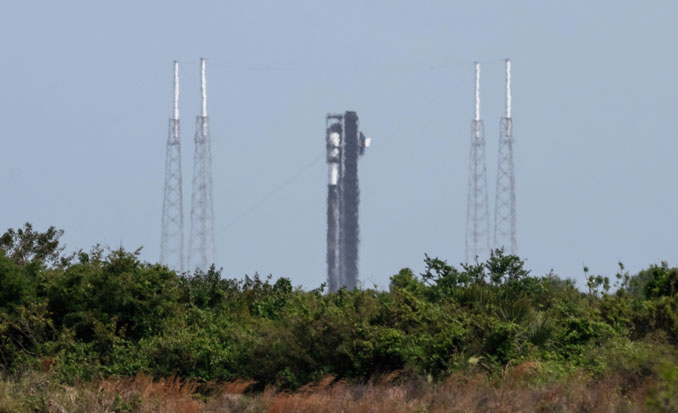
Update 7:18 p.m. EDT: SpaceX adjusted the T-0 liftoff time.
SpaceX is looking to follow up its fourth test flight of its massive Starship rocket in southern Texas with a Falcon 9 launch from Cape Canaveral Space Force Station. The Friday night flight marks the 344th Falcon 9 to launch, a little more than 14 years after its launch debut on June 4, 2010.
The Starlink 10-1 mission will add another 22 satellites to the massive constellation consisting of more than 6,000 active satellites in low Earth orbit, according to expert orbital tracker and astronomer, Jonathan McDowell. Liftoff from pad 40 is set for 8:28 p.m. EDT (0028 UTC).
Spaceflight Now will have live coverage beginning about an hour prior to liftoff.
[embedded content]
The first stage booster supporting this mission, tail number B1069 in the SpaceX fleet, will be launching for a 16th time. It previously supported the launch of SpaceX’s 24th cargo resupply mission to the International Space Station (CRS-24), Eutelsat’s Hotbed 18F satellite and 11 previous batches of Starlink satellites.
About 8.5 minutes after liftoff, B1069 will land on the SpaceX booster, ‘A Shortfall of Gravitas.’ If successful, this will be the 74th landing of a booster on ASOG and the 317th booster landing to date.
The mission comes about a day and a half after the company made marked strides forward with its Starship program. Flight 4 was not only an opportunity to further validate the technology within the rocket, but also SpaceX’s Starlink network.
“Starlink on Starship once again enabled real-time telemetry and live high-definition video throughout every phase of entry, with external cameras providing views all the way to the flight’s conclusion,” SpaceX wrote on its website following the mission.
Peaking heating. Starship on a good entry trajectory pic.twitter.com/H0Gv6hyvt2
— SpaceX (@SpaceX) June 6, 2024
During the ascent and coast phase of the Ship 29 upper stage, SpaceX advertised the views with a watermark reading “Views by Starlink.” It allowed viewers to witness the rocket pass through the point of peak heating as the reddish-pink plasma highlighting the reentry crescendoed to a stark purple.
It also allowed continuous views of the forward flap of Starship, which nearly ripped off, but persevered to allow for a controlled splashdown as well as a flurry of memes on social media that ranged from “Terminator 2” to “Star Wars: Revenge of the Sith.”
“From South Texas to the other side of the Earth, Starship is in the water. Whew, what a day,” said SpaceX’s Dan Huot during the company’s launch livestream. “That was absolutely incredible. We got views pretty much the whole way down. Analysis said we could do it, we weren’t if it was going to be able to happen. But Starlink powered through and we were able to get that signal.”
“We started to get some debris on the cameras and everything, but we were able to see it.”
Starlink will be getting another key technology demonstration later this summer when the four-member crew of the Polaris Dawn mission, commanded by businessman Jared Isaacman, performs an on-orbit communications test.
Starship made a controlled reentry, successfully making it through the phases of peak heating and max aerodynamic pressure and demonstrating the ability to control the vehicle using its flaps while descending through the atmosphere at hypersonic speeds pic.twitter.com/p8bC9UweLx
— SpaceX (@SpaceX) June 6, 2024
- SEO Powered Content & PR Distribution. Get Amplified Today.
- PlatoData.Network Vertical Generative Ai. Empower Yourself. Access Here.
- PlatoAiStream. Web3 Intelligence. Knowledge Amplified. Access Here.
- PlatoESG. Carbon, CleanTech, Energy, Environment, Solar, Waste Management. Access Here.
- PlatoHealth. Biotech and Clinical Trials Intelligence. Access Here.
- Source: https://spaceflightnow.com/2024/06/07/live-coverage-spacex-to-launch-22-starlink-satellites-on-falcon-9-flight-from-cape-canaveral/



